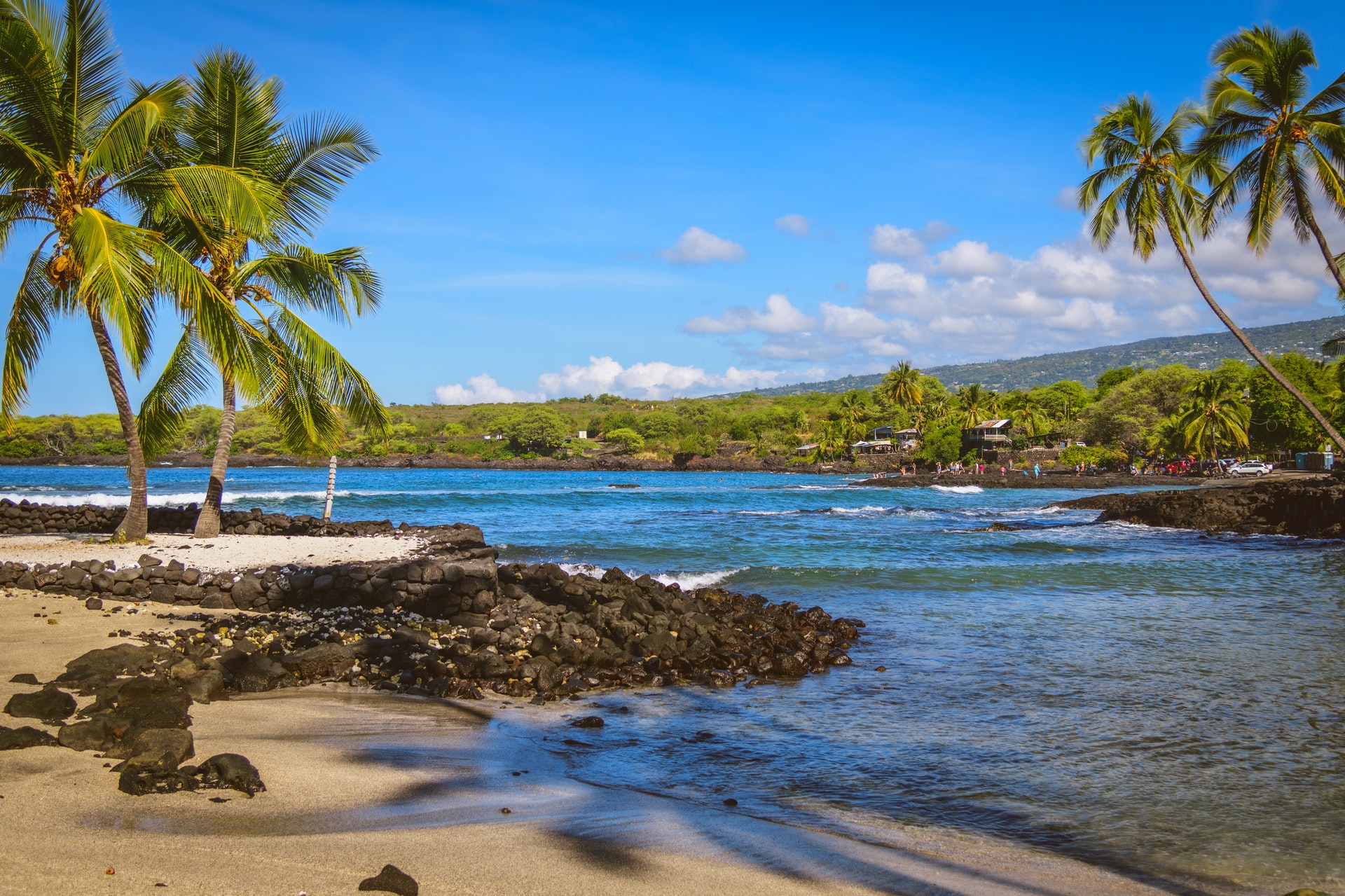Hawai’i Island residents can find out what’s in the water at their favorite beaches for the first time.
HILO, HAWAI‘I – January 19, 2022 – A new dataset, made public this month by Hawai’i Wai Ola, gives community members access to high quality, open-source water quality testing data dating back to June of 2020.
Volunteers and members of Hawai’i Wai Ola—a local community hui founded by the Coral Reef Alliance to improve water quality—have taken monthly water quality samples at popular sites around Hawai’i Island, including Kahalu’u Bay, Richardson Beach Park, Carlsmith Beach Park, Puhi Bay Beach, Reeds Bay Beach and Moku Ola Beach. The new dataset includes metrics from these locations on pH, salinity, temperature, turbidity, nutrients and enterococcus levels—commonly used indicators of sewage pollution in nearshore ocean environments.
“The fact that we have this data set is incredibly exciting,” says Erica Perez, senior program manager at the Coral Reef Alliance and founding member of Hawai’i Wai Ola. “These are sites that aren’t tested by the Department of Health (DOH), so this is the first time this information is being made available to people.”
While DOH regularly tracks water quality throughout the state, their resources are limited and as a result, there are critical knowledge gaps in the information they collect.
“DOH can’t take action to address poor water quality if they don’t know when the water quality is poor,” says Perez. “The purpose of our program at Hawai’i Wai Ola is to empower local communities to work alongside DOH and help expand their understanding of ocean water quality and overcome their resource barriers.”
For example, this new data shows several beaches have experienced unhealthy enterococcus levels over the last year and a half. Richardson Beach Park measured 1119 CFU per 100 mL in August of 2020—that’s nearly nine times higher than the levels considered healthy by the U.S. Environmental Protection Agency. The Hawai’i Department of Health issues an alert for any area experiencing levels of 104 CFU per 100 mL or above for a single sample.
But Perez warns that it’s important not to jump to conclusions when noticing one-off data points like this, and instead to focus on the fact that the community near Richardson Beach Park can now work with DOH to identify if there’s a bigger problem and find a resolution.
“These are one-time sampling events that happen once a month, so they don’t necessarily give the full story,” says Perez. “Enterococcus levels can change rapidly based on tides, currents, weather events, etc. It could rain and cesspools could leach into the groundwater and into the shoreline, and then it could be gone the next day. So these levels aren’t always an indicator of an ongoing problem.”
The hui is working with the community to ensure they know about this new resource and they have shared the dataset with DOH so they can conduct a more thorough analysis. This new knowledge will be included in DOH’s bi-annual ocean beach health report that they use to identify areas of concern and strategize.
The whole program and the fact that this data now exists highlights the power of citizen science networks, says Manuel Mejia, the Hawai’i regional program director for the Coral Reef Alliance. Hawai’i Wai Ola and the Coral Reef Alliance are working to train community volunteers to collect water quality samples following DOH protocols. Volunteers will then bring the samples to a water quality lab in Kona for analysis.
“We can’t manage what we can’t measure,” says Mejia. “But we can give communities the tools they need to start measuring, and to advocate for an improvement in water quality which is so desperately needed across our islands. Allowing local communities to have more ownership over their resources and to have a say over how they’re utilized is invaluable.”
The new dataset can be viewed online at hawaiiwaiola.com/data.
ABOUT THE CORAL REEF ALLIANCE
The Coral Reef Alliance (CORAL) is committed to saving the world’s coral reefs. The nonprofit organization works at local, regional and global levels to keep coral reefs healthy so they can adapt to climate change and survive for generations to come. As one of the largest global NGOs focused exclusively on protecting coral reefs, CORAL has used cutting-edge science and community engagement for nearly 30 years to reduce direct threats to reefs and to promote scalable and effective solutions for their protection. Learn more about their approach at coral.org.
Contact:
Marissa Stein, Associate Marketing Director
Coral Reef Alliance
(510) 370-0502
